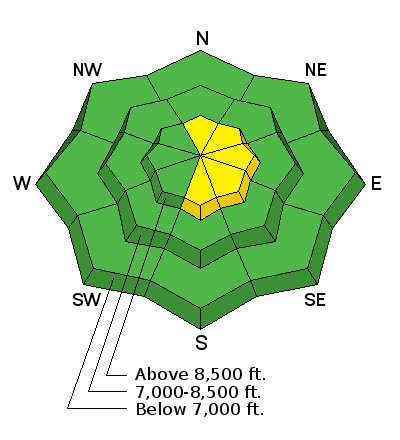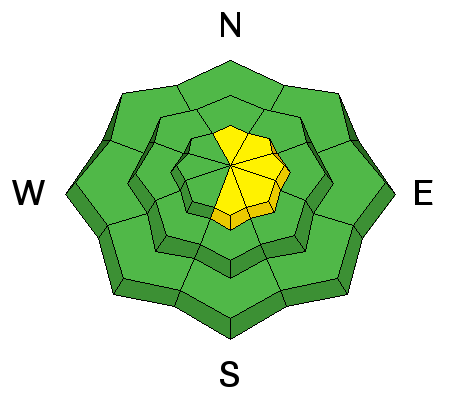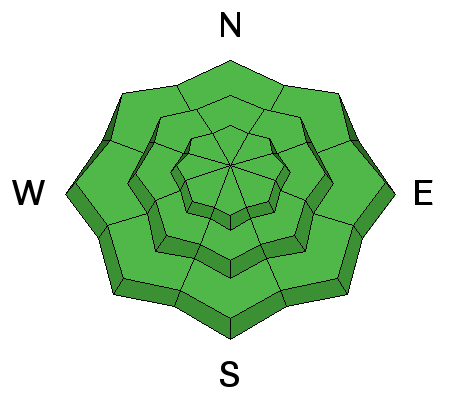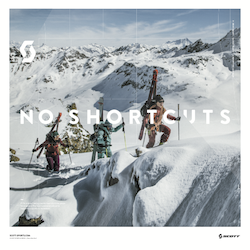Forecast for the Ogden Area Mountains

Thursday morning, February 15, 2018
Areas of MODERATE danger exist for shallow new snow (drifts and sluffing) avalanches. Deeper avalanches stepping into old snow are possible in isolated steep terrain with poor snow structure on steep, wind drifted north and northeast facing slopes at the upper elevations.

 Special Announcements
Special Announcements
It could be worth the drive...At 6PM on February 17 at Alpine Distilling in Park City, join a presentation on the UAC's Avalanche Awareness Know Before You Go Program then learn about how we perceive aroma and taste through whiskey while seeing how Alpine Distilling crafts local, award winning spirits. The evening will feature a specialty cocktail made with Alpine Distilling's Persistent (Weak Layer) Vodka and include a raffle for a backcountry kit (beacon, shovel, and probe) donated by Backcountry.com. Contact [email protected] for details and reservations.
 Weather and Snow
Weather and Snow
Winds are overcast with snow falling in the mountains with 3" of new already on the ground. Temperatures are in the teens with winds from the west at 15mph. I'm glad to have yesterday's strong southerlies in the rearview mirror, so to speak. Coverage sits at 30-36" with 45" at Monte Cristo.
 Recent Avalanches
Recent Avalanches
No activity reported from the backcountry yesterday.
Wind Drifted Snow

Description
Pockety old and new wind drifts may be found in the steep wind drifted terrain and while yesterday's may be perhaps classified as stubborn hard slabs, today's will be softer and more sensitive. Both will be generally shallow but worthy of mention.
Persistent Weak Layer

Description
Buried faceted layers in the Ogden area snowpack are mostly dormant, and it will take a decent load of new snow (maybe a foot or so) to awaken this avalanche problem on many slopes. Unfortunately with faceted snow pesisting in the snowpack, mainly on NW, N, and NE facing slopes above 8500 feet, a small chance remains of triggering one of these avalanches. The buried surface hoar from 25 February is still on the radar for us and found more prominently on the east side of the Ogden mountain valleys. Collapsing and cracking are easy signs of instability here; snowpit tests remain warranted, especially with continued loading.
There is a lot of variability in the snowpack strength and depth. Slopes with a shallower snowpack, especially those that are rocky, tend to have weaker snow. Spatial variabitlity is what we call the differences from one slope to another and could make for tricky conditions if we get the forecast snow and wind.
See a short discussion in this video.
Additional Information
We should see continued snowfall through the late morning. Winds will be 20mph from the west northwest and diminishing over the course of the day. Temps at the highest elevations will drop to the low teens by tonight. A weak system nudges through Friday eve with another storm on tap for Sunday.
General Announcements
CLICK HERE FOR MORE GENERAL INFO AND FAQ
The UAC has new support programs with Outdoor Research and Darn Tough. Support the UAC through your daily shopping. When you shop at Smith's, or online at Outdoor Research, REI, Backcountry.com, Darn Tough, Patagonia, NRS, Amazon, eBay a portion of your purchase will be donated to the FUAC. See our Donate Page for more details on how you can support the UAC when you shop.
Benefit the Utah Avalanche Center when you buy or sell on eBay - set the Utah Avalanche Center as a favorite non-profit in your eBay account here and click on eBay gives when you buy or sell. You can choose to have your seller fees donated to the UAC, which doesn't cost you a penny
This information does not apply to developed ski areas or highways where avalanche control is normally done. This advisory is from the U.S.D.A. Forest Service, which is solely responsible for its content. This advisory describes general avalanche conditions and local variations always occur.




